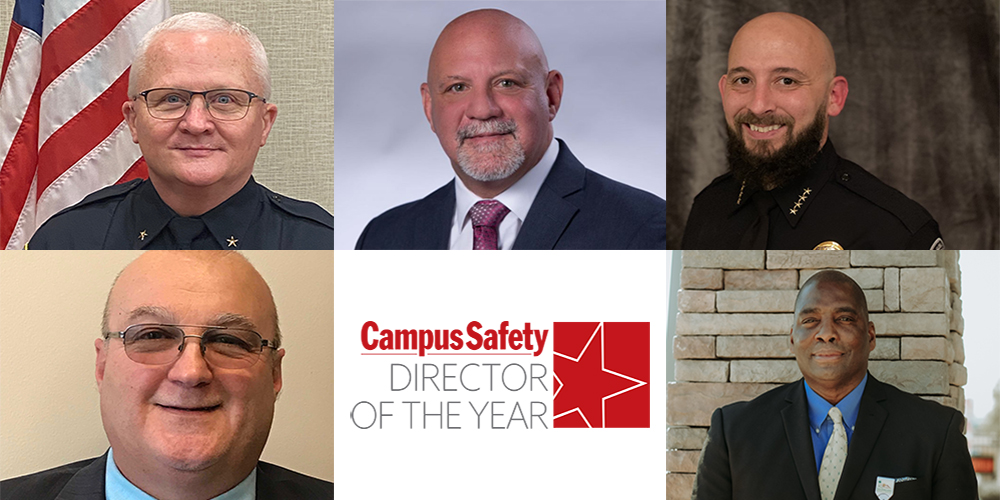Healthcare workers continue to face some of the most challenging times in recent history. They are still dealing with COVID on a daily basis, and hospitals are treating a growing number of violent crime victims.
Healthcare workers also have a unique role in that the vast majority of their “customers” — patients and visitors — are at hospitals for non-joyous occasions, making them more prone to feeling anxious and, in turn, increasing the likelihood of a violent crime being committed against them.
Aside from implementing requirements put in place by local and federal regulatory organizations, there are many other steps that healthcare safety and security departments can take to improve both the experience of the healthcare worker and the patient.
To gather some of those recommendations, we interviewed this year’s Campus Safety Director of the Year finalists, which include police chiefs and security and public safety directors. Below are some ways the healthcare finalists suggest others in similar roles work toward improving safety and security at hospitals. Most of these tips can also be applied to anyone in the public safety industry.
Watch the video
[promo_content slug=”doy-2023-nomination-promo”]
1. Regularly Search for Available Grants
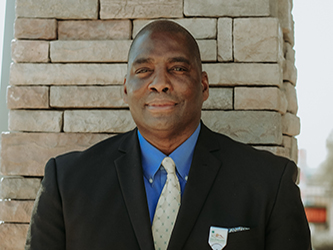
Joey Hunter, Director of Security, Safety and Emergency Preparedness, San Gorgonio Memorial Hospital (Banning, Calif.)
Most institutions would tell you one of the biggest barriers to maintaining or improving campus safety and security is funding. In 2019, Joey Hunter, director of security, safety, and emergency preparedness at San Gorgonio Memorial Hospital in Banning, Calif., was able to secure more than $400,000 in federal and state grants, as well as save the hospital $500,000 in capital.
In his interview with Campus Safety, Hunter partly attributed his success in obtaining grants to consistency. Every day, he searches for available grants on grants.gov. By regularly searching the site, Hunter came across a non-matching grant, meaning the federal government and the state paid for it in full.
Hunter also says persistence is key. If your application is rejected, try again. That’s what his hospital did.
“Once or twice, we submitted the documents and they came back as rejected, but one good thing with the federal government in the state is they will tell you and show you what you messed up on,” he said. “We were able to make those corrections, submit them back to them in a timely fashion, and actually got those grants approved.”
Ultimately, by receiving this grant, the $500,000 saved in capital was redirected to the hospital’s nursing and engineering department — a win for multiple departments.
In the full interview, Hunter also discussed:
- How to select a grant writer (2:10)
- How to select which grants to pursue (2:51)
- Advice for other hospital security departments applying for grants (3:30 and 5:35)
If anyone would like to further discuss advice for securing grants, Joey is happy to share. You can email him at [email protected].
2. Instill Trust in Your Staff
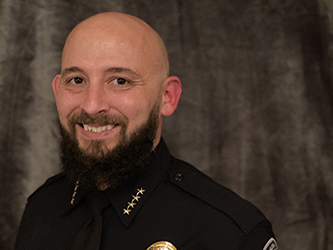
Kyle Houraney, Director of Public Safety and Emergency Management, Orange County Global Medical Center (Santa Ana, Calif.)
As a leader, ensuring employees feel supported is key to a positive work environment. This is particularly true in healthcare settings where there are greater risks than in the average workplace.
Kyle Houraney, director of public safety and emergency management at Orange County Global Medical Center (OCGMC) in Santa Ana, Calif., takes time to build relationships with all of his staff and to show that he is genuinely interested in their job satisfaction and general well-being. This proved especially true when an employee with underlying health conditions contracted COVID-19.
Houraney checked in on the employee regularly and suggested he order a blood pressure cuff and a pulse oximeter to keep an eye on his blood oxygen levels. By the fourth day, the employee was struggling to breathe and was having difficulty completing a sentence. Houraney told the employee to check his blood saturation levels, which had plummeted to 79. Houraney urged him to go to the hospital immediately. The employee said he wanted to go to OCGMC, so Houraney called the E.R. and told them to get a team ready.
The employee was diagnosed with COVID-19 pneumonia. He had to undergo several treatments and spent 10 days in the hospital. He also had to recover at home for an additional three weeks.
The employee told Houraney he saved his life. Houraney says he simply gave him the information he needed to make a decision.
“I try to build a really strong rapport with my entire team. I have multiple teams and I try to spend time with them in between my meetings and being a leader, whether that’s just having lunch with him, taking time on my day off and doing some cross-training, giving them goals and objectives,” he said. “Being that leader, I let them know that I care about them and that I wouldn’t put them in a situation that I wouldn’t put myself in. I think doing those things, I’ve been able to earn a lot of respect.”
In the full interview, Houraney also shared:
- More details on how the medical event unfolded (1:34)
- How his background and training helped him identify the situation as being life-threatening (4:54)
3. Show Empathy for Other Departments
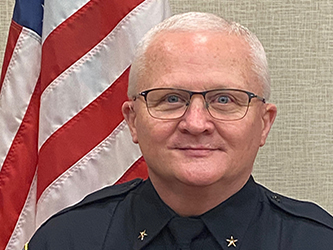
Randy Kolentus, Chief of Police, Reid Health System (Richmond, Ind.)
Empathy should be shown throughout all aspects of our lives. It helps us relate to others, strengthens relationships, and simply makes the world a better place. Healthcare clinicians are perhaps the ones most familiar with the importance of showing empathy to others — something they themselves were often not shown by the general public during the peak of the COVID-19 pandemic.
While hospital security departments certainly dealt with their own serious challenges during the pandemic, perhaps no one within the healthcare system suffered more than clinicians. They sacrificed their own well-being to fight a new virus that little was known about, had to facilitate final goodbyes between family members and their dying loved ones, and missed out on time with their own families to protect them from the virus.
Randy Kolentus, chief of police for the Reid Health System in Richmond, Ind., made sure his security team stepped it up and offered support to the frontline medical workers. Even showing up in small ways made a difference.
“Our officers noticed early on that people were needing help. Things were getting heavy, especially for our clinicians. The officers picked up on that. They were needing us to physically be there to help them move things, to help them get things,” he told Campus Safety. “Our officers daily engaged daily with staffing on what they needed. ‘Is there anything I can go get?’ ‘Do you need me to go out somewhere and get something that’s going to help your team?’ They went to the cafeteria often. We’d get drinks for staff. We would get food for them and deliver it to different nursing units. Candy, just little things to put a smile on somebody’s face.”
In his full interview, Kolentus also discussed:
- The experience of the doctors, nurses, and other healthcare professionals at Reid Health during the pandemic (1:38)
- Advice for other hospitals struggling with medical worker shortages and burnout (17:41)
4. Partner with Fusion Centers for Information Sharing
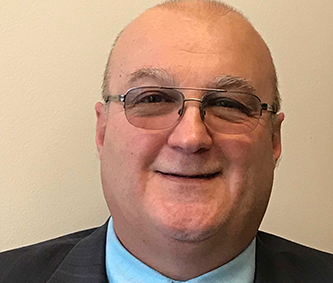
Rick Franks, Security Manager, Jewish Association on Aging (Pittsburgh, Penn.)
Collaboration is key when it comes to campus safety and security. Whether it be connecting with local police, community programs, or federal agencies, sharing resources and information is vital for maximum protection and preparedness.
Rick Franks, security manager at the Jewish Association on Aging in Pittsburgh, Penn., established a partnership with the Western Pennsylvania and Region 13 Information Processing and Criminal Intelligence Center (CIC), commonly referred to as a fusion center. According to Homeland Security, fusion centers are state-owned and operated centers that serve as focal points in states and major urban areas for the receipt, analysis, gathering, and sharing of threat-related information between State, Local, Tribal and Territorial (SLTT), federal, and private sector partners.
Franks is a liaison officer, meaning he is constantly assessing things that are happening around him and sharing with the center.
“For instance, if something were to happen on our campus or in our community, it might not make sense to everybody right now, but it’s a little piece of the puzzle that we find,” he told Campus Safety. “My role is to share that with the analysts at the fusion center and they try to put this puzzle all together to get the big picture, and then they send that information back to all the fusion liaison officers, giving them an actionable intelligence report.”
Through his participation with the fusion center, Franks said his campus has been able to quickly find out about incidents at other healthcare facilities, including cyberattacks.
“We were able to bolster our security or put in different protocols to protect us from the same type of event. We have been very fortunate in being able to stop those things before they happened on our campus,” he said. “It’s just the benefit of getting that information so timely and being able to take action and consider those threats before they actually happen.”
In the full interview, Franks also discussed:
- Other ways working with the fusion center benefits his organization (3:06)
- Advice for other healthcare facilities wanting to get involved with a fusion center (7:31)
5. You Need a Village to Take Care of a Village
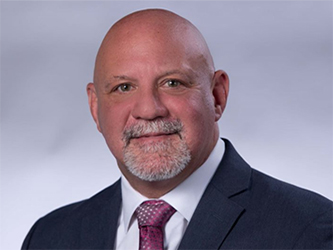
Paul Sarnese, Assistant Vice President of Environmental Services, Security and Safety, Virtua Health (N.J.)
Most of us are familiar with the phrase, “It takes a village.” The expression originated from an African proverb and conveys the message that it takes many people to provide a safe and healthy environment for a child. It is now often used to emphasize that we are better as a collective versus on our own. This applies to securing all types of campuses.
Healthcare campuses are cornerstones of a community, and in order to effectively serve those communities, all departments within those facilities must work together. This rang particularly true for New Jersey’s Virtua Health when it provided support for more than 1,000 Afghan refugees in August 2021.
“We received a call from the [Joint Base McGuire-Dix-Lakehurst] and were asked to support [what was originally called] Operation Allies Refuge. They identified our facility as being the primary facility that would take care of all emergent and non-emergent care for the refugees that were coming in,” said Paul Sarnese, Virtua Health’s assistant vice president of environmental services, security and safety, and the 2022 Healthcare Director of the Year winner. “We were notified on August 24. We received our first patient on August 27.”
There were over 62 agencies represented on that phone call. After the initial call, it was all hands on deck, and one of Sarnese’s colleagues noted, “It takes a village to take care of a village.”
“We were able to quickly set up spaces in our facility for that extra surge. We set up a couple of conference spaces for that initial wave of patients that we were expecting,” Sarnese described. “We got a call from the base before they would transport a patient to us. Each of the refugees came with a military escort as well as a translator so that made our process a lot easier. We had to learn a lot because the refugees were coming in with no I.D., no date of birth, and really no medical history.”
In the full interview, Sarnese also discussed:
- Both challenges and successes his department had while supporting refugees (9:00)
- Advice for other healthcare security professionals who may be tasked with assisting refugees (11:22)
[promo_content slug=”doy-2023-nomination-promo”]

